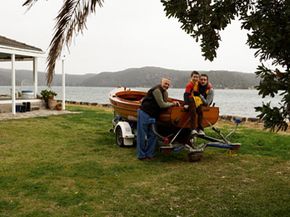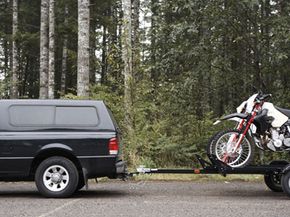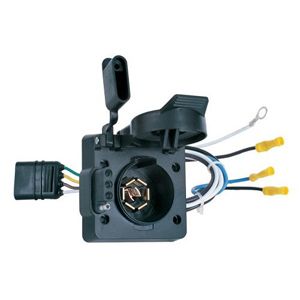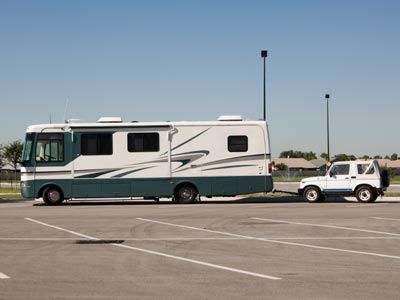You bought your nifty sports utility vehicle (SUV) and your boat and trailer, and you're ready for a weekend on the lake. The wife has the food packed and ready, and the kids are slathered in sunscreen, eager for some water-skiing. All you need to accomplish as the head mechanic in the family is to hook your SUV to your boat trailer and hit the road. All goes well with the hookup, but when it comes time to wire your trailer to your truck, things get a little iffy. Your trailer wiring plug doesn't match the one on your vehicle. The wife and kids stare daggers into your head as you curse your way through hours of agonizing wiring mishaps. Thanks, Dad.
Each state has its own set of towing laws and regulations, from size limits to weight restrictions. The one common denominator for each state in the U.S. is that the trailer must be wired to the vehicle. Just like your car or truck's brake and signal lights must be in working order, so should your trailer's lights. This is accomplished by wiring the vehicle to the trailer.
Advertisement
Many times, trailer wiring is as easy as inserting the trailer plug into your vehicle's pre-rigged system. In fact, most vehicles, especially those meant for towing, come prewired and ready to roll. Whether your vehicle is pre-rigged or not, you'll have to go through the necessary steps to make sure your trailer is wired to your car. Besides being the law, it's also common sense. You'll want the cars behind you in traffic to see every brake tap and turn signal on your trailer, just like they would on your car.
Read on to find out more about trailer electronics. How can you wire your trailer to your tow vehicle to ensure towing safety on your journey to your recreational destination?
Advertisement





